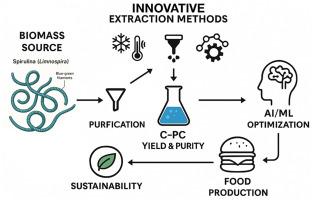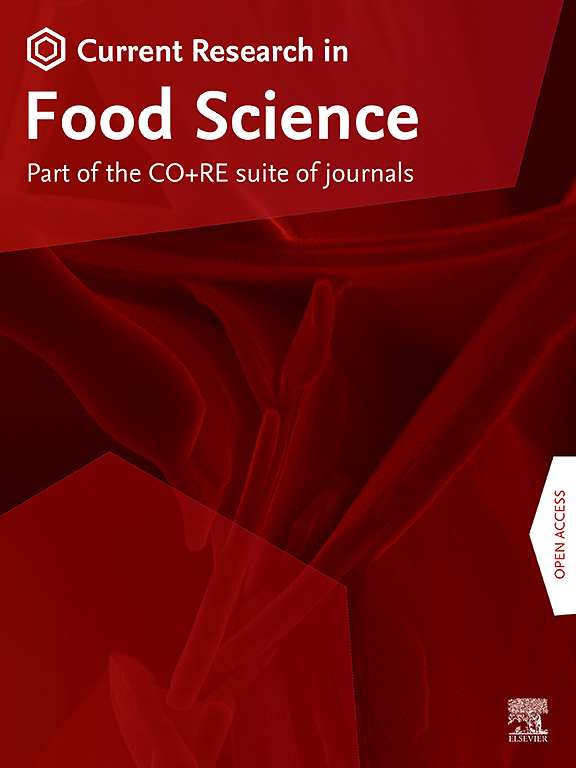从Limnospira spp中提取藻蓝蛋白:为食品工业提供可持续的天然蓝色来源
IF 7
2区 农林科学
Q1 FOOD SCIENCE & TECHNOLOGY
引用次数: 0
摘要
藻蓝蛋白(PC)是一种蓝色蛋白色素,由于其作为合成食用色素的替代品的潜力而引起人们的兴趣。蓝藻属的Limnospira spp.是市售PC的主要来源。提取和纯化工艺在产量、纯度、质量以及环境和经济可持续性方面表现出很高的可变性。在过去的几年里,不同的提取方法,如冷冻和解冻,超声辅助提取和酶辅助提取得到改进,以提高PC的产量和减少纯化步骤,一旦获得粗提取物。本文综述了从Limnospira生物质中提取PC的技术。在产量、纯度、可行性、成本和环境影响方面,对传统技术和创新技术进行了比较,以突出其性能。此外,还报道了分离和纯化,以阐明目前采用的工艺和可能的改进,以提高蛋白质的纯度等级。本对比研究还旨在为开发利用神经网络和人工智能优化藻蓝蛋白提取的替代方法提供基础。本文章由计算机程序翻译,如有差异,请以英文原文为准。

Phycocyanin extraction from Limnospira spp.: sustainable source of natural blue color for the food industry
Phycocyanin (PC) is a blue protein pigment whose interest increased due to its potential as alternative to synthetic food colorants. The cyanobacteria of the genus Limnospira spp. are the main source of commercially available PC. The extraction and purification processes showed high variability in yield, purity, quality and environmental and economic sustainability. During the last years, different extraction methods like freezing and thawing, ultrasound assisted extraction and enzyme assisted extraction have been improved to increase PC yield and reduce purification steps once crude extract is obtained. This review aims to provide a comprehensive analysis of PC extraction techniques from Limnospira biomass. Conventional and innovative technologies are compared to highlight their performances, in terms of yield, purity, feasibility, cost, and environmental impact. Furthermore, separation and purification are reported to elucidate which processes are adopted nowadays and which are the possible improvement to increase the purity grade of protein. This comparative study also aims to provide the basis for the development of alternative methods for the optimization of phycocyanin extraction, using also neural networks and artificial intelligence.
求助全文
通过发布文献求助,成功后即可免费获取论文全文。
去求助
来源期刊

Current Research in Food Science
Agricultural and Biological Sciences-Food Science
CiteScore
7.40
自引率
3.20%
发文量
232
审稿时长
84 days
期刊介绍:
Current Research in Food Science is an international peer-reviewed journal dedicated to advancing the breadth of knowledge in the field of food science. It serves as a platform for publishing original research articles and short communications that encompass a wide array of topics, including food chemistry, physics, microbiology, nutrition, nutraceuticals, process and package engineering, materials science, food sustainability, and food security. By covering these diverse areas, the journal aims to provide a comprehensive source of the latest scientific findings and technological advancements that are shaping the future of the food industry. The journal's scope is designed to address the multidisciplinary nature of food science, reflecting its commitment to promoting innovation and ensuring the safety and quality of the food supply.
 求助内容:
求助内容: 应助结果提醒方式:
应助结果提醒方式:


